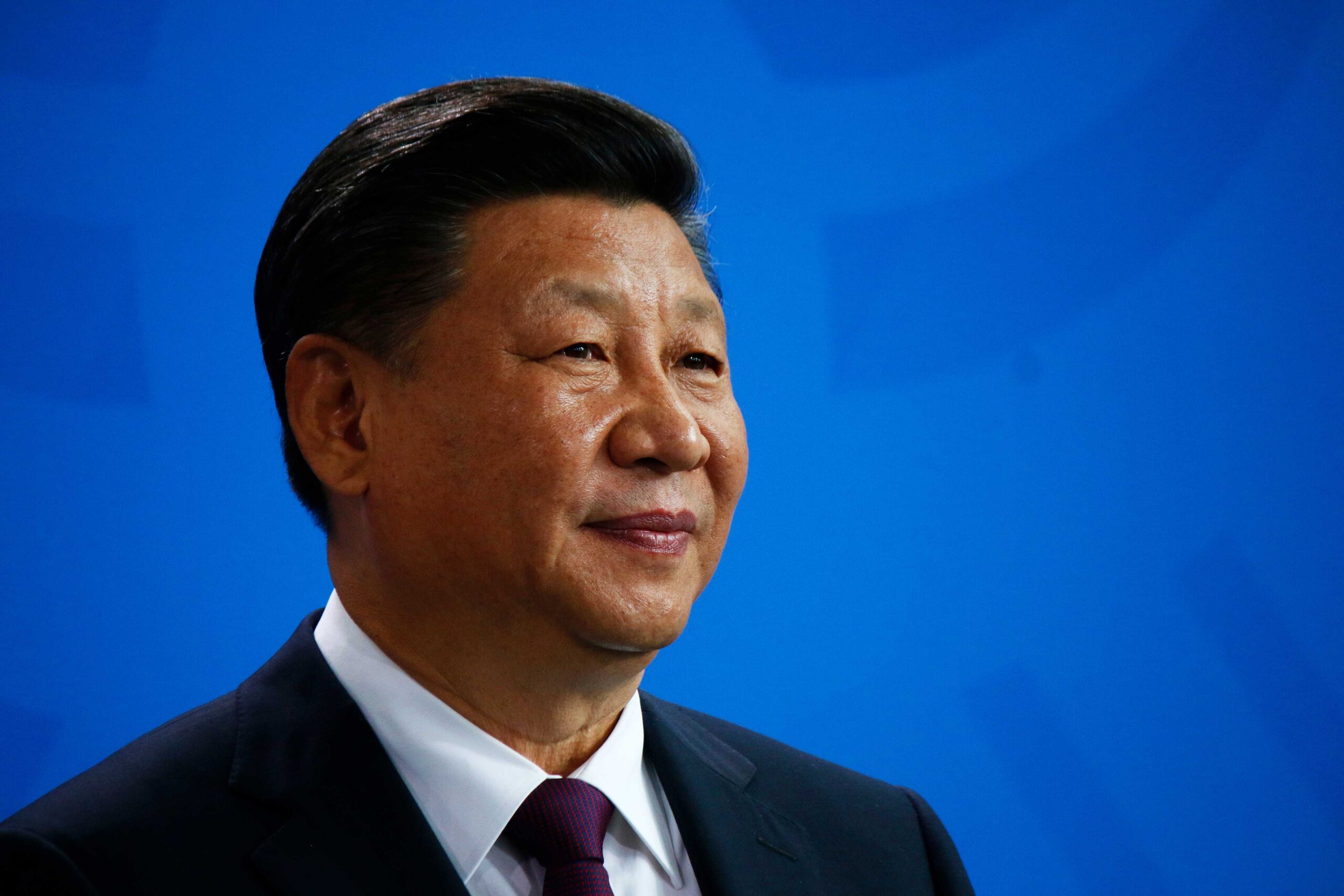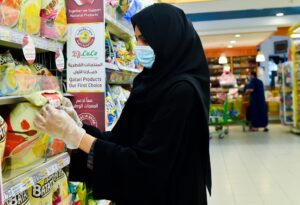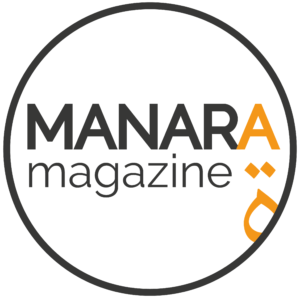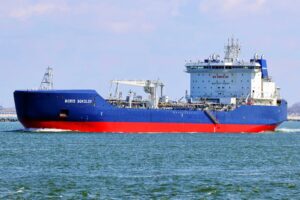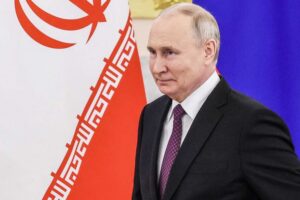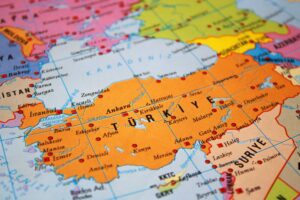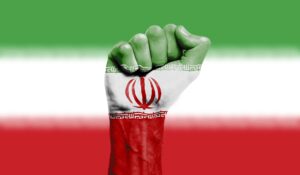China, the Middle East, and the West are highly divergent in history, culture, and political ideology. Therefore, they hold myths about one another, which are often far from reality. In recent years, while the Middle East is witnessing the U.S.’s strategic withdrawal and China’s growing influence, the gap between the myth and the truth is widening, and China’s motives and actions are increasingly misapprehended.
The History of China’s Policy in the Middle East (1950s-present)
Reviewing the past 70 years, it can be somewhat surprisingly concluded that China’s Middle East policy has little to do with the dynamics inside the Middle East; rather, it has mainly been determined by issues occurring outside.
First, China’s policy towards the Middle East is shaped by great power competition. During the Cold War, China was determined to prevent the Middle East being controlled by a hostile major power that may have posed an indirect military threat to China.[i] Therefore, in the 1950s, China adopted “leaning to one side” diplomacy and formed an alliance with the Soviet Union against the U.S., motivated by the belief that the Middle East was part of American global encirclement of socialist countries.
In 1987, Deng Xiaoping, the Chinese supreme leader, made the point clearly: “We care about the situation in the Middle East because it involves the issue of peace and war regarding the prospects of a Third World War.
Then, in the 1970s, China co-operated with the West and developing countries to form a united front against the Soviet Union when the Middle East formed the frontline to countering Soviet expansion. In 1987, Deng Xiaoping, the Chinese supreme leader, made the point clearly: “We care about the situation in the Middle East because it involves the issue of peace and war regarding the prospects of a Third World War. From the perspective of global strategy, we are concerned about the situation and outlook of this region.”[ii] In the 1990s, following the end of the Cold War, great power competition was almost removed from the decision-making of China’s Middle East strategy.
Second, China’s policy towards the Middle East is decided by China’s evolving general diplomatic goals. In the 1950s, the top priority was to break the diplomatic blockade by the West, in which the Middle East was deemed to play a critical role. From 1956 to 1959, China established diplomatic relationships with seven Middle Eastern countries (Egypt, Syria, Yemen, Iraq, Morocco, Sudan and Algeria) in just four years. By the end of 1959, only 31 countries in the world had established diplomatic relations with China, 12 of which were socialist countries. Out of the remaining 19 countries, the Arab world accounted for seven. This was significant for China’s diplomacy at that time. Since this period, the “Big Bloc” of Arab countries has become a prevalent term in China’s diplomacy, which refers to the large number of Arab countries with great political influence.
In the 1960s, under the influence of far-left ideology, Chinese politicians and diplomats argued that “Asia, Africa, and Latin America are the weakest link in the chain of imperialism and the eye of the storm of world revolution. It is China’s duty and natural obligation to support revolutionary movements in these regions.” During this period, China provided ideological support as well as limited material assistance to some national liberation movements and guerrilla groups like the Dhofar Liberation Front in Oman and the Palestine Liberation Organization. These organizations, shunned by the U.S. and the Soviet Union, had turned to China for military cooperation.
In the 1970s, with the Cultural Revolution coming to a close and the enthusiasm for world revolution waning, China aspired to return to the international arena as a great power. The political importance of the Arab “Big Bloc” rose again. When China sought to restore its seat in the U.N. in 1971, out of the 16 Middle Eastern countries, ten voted in favor and five abstained.
In the 1980s’ era of reform and opening up, the key task for China’s diplomacy was to support economic development. Throughout the 1980s, the Middle East was the largest market for China’s arms exports, which averaged 2 billion USD annually, accounting for 86.8% of China’s total arms exports. The Middle East also became China’s fourth largest trading partner while China enjoyed a large trade surplus. Trade with the Middle East earned China $50 billion of foreign exchange. Moreover, Middle Eastern countries also provided China with $300 million development loans.[iii]
After 1989, China was isolated by the West and breaking this isolation became a top priority. In November 1990, just before the Gulf War, the then Chinese Foreign Minister Qian Qichen “came across” U.S. Secretary of State James Baker in Cairo. The two held talks, breaking the U.S.’s red line of high-level contact with China. Subsequently, China did not use its veto in the U.N. Security Council against the U.S. and the U.S. agreed to lift the political and economic sanctions imposed on China. The Gulf Crisis helped China lift the sanctions and the western blockade.
In the last decade, global competition between China and the U.S. has intensified and China’s political, economic, and military influence in the Middle East has expanded. An increasing number of people interpret China’s Middle East policy from the perspective of great power competition, misunderstanding the fact that China’s Middle East policy is primarily determined by China’s overall diplomatic objectives.
The Withdrawal of the U.S. and the Rise of China
So far, the U.S. has not implemented a systematic strategy to confront or contain China in the Middle East; its policies are limited, sporadic, and emotional. “Withdrawal” has been the dominant theme of the U.S.’s Middle East strategy over the past decade. Containment of China is merely noise. It is too early to argue that “the focus of the U.S. Middle East policy has turned to counter China”.[iv]
A confrontation between China and the U.S. is not in China’s interests, especially if it were to occur in the Middle East.
For China, a confrontation between China and the U.S. is not in China’s interests, especially if it were to occur in the Middle East. In the Middle East, China has limited interests and high risks, while the U.S. enjoys comprehensive and prominent advantages. Faced with the provocation and noise from America, China does not adopt tit-for-tat responses, but instead insists on a parallel strategy of “you fight your fights and I fight mine”.
The U.S. is not the main concern of China’s Middle East policy. China neither wishes to confront nor undermine the U.S. policy in the Middle East. Moreover, China does not ask regional countries to take sides. Regarding Middle Eastern issues, the Sino-US relationship was rivalrous from 1949 to 1970, occasionally co-operative from 1970 to 1990, and parallel from 1990 to 2020. In the era of parallel, China and the U.S. neither engage in confrontation nor co-operation. China’s basic attitude is not to co-operate with, not to support, and not to help the U.S. disentangle itself from the Middle East. It can be argued that China does not take the U.S. into consideration in its actions in the region and does not regard the U.S. as a target in the Middle East. In the future, the Sino-American relationship in the region will stand between confrontation and parallelism in the region.
Since 2012, the Middle East has played an important role in China’s diplomacy in the following three areas: 1) building China’s image as a new major power; 2) promoting the Belt and Road Initiative (BRI); 3) supporting China’s struggle on the international stage. In contrast to the U.S.’s antagonistic actions through intervention, engaging in war, and subsequent withdrawal from the Middle East, China has built a good image through “Infrastructure Diplomacy”, “Loan Diplomacy”, “Mask Diplomacy”, and “Vaccination Diplomacy”. Most Arab countries support China’s position regarding Taiwan, the South China Sea, human rights, the BRI, the Covid-19 pandemic, and the administration of vaccines. So far, 19 Middle Eastern countries have signed BRI co-operation documents with China. On December 25, 2020, the spokesperson of the Chinese Ministry of Foreign Affairs highly praised China’s relations with Arab countries as “a model for international and South-South cooperation.”[v]
China’s Middle East policy does not challenge the U.S. but it will naturally produce effects that will erode the U.S.-led political and economic order. In the field of finance, the World Bank, IMF, and other international organizations set preconditions for economic assistance, while the China-led New Development Bank, the Asian Investment Bank, and the New Silk Road Fund do not. The hegemony of the U.S. dollar has been impacted: the RMB is the currency used by China-led international financial institutions and bilateral investment agreements between China and the Middle East, as well as the Shanghai Gold Exchange and Shanghai International Energy Exchange. In the field of trade, China has established a new trade and investment dispute settlement mechanism for BRI projects outside the WTO system. In the field of global governance, China offers an alternative to the West. In the field of diplomacy, the “major country diplomacy with Chinese characteristics” uses the U.S. as a reference in all the issues. In fact, aside from some technical factors, the “Chinese model” is in no way challenging the U.S. in the Middle East.[vi]
However, as the established power, the U.S. tends to be overly anxious and vigilant, exaggerating the strength and intention of the rising power. As the rising power, China is exposed to the danger of being overconfident and overly eager to show its strength and status as a great power. As the third party, the Middle East is eager to engage with rising China to balance against the U.S.’s withdrawal, and so is susceptible to exaggerating China’s influence. This is especially the case in countries sanctioned by the West such as Iran, Syria, and Sudan. These countries tend to bluff about their relations with China to shed their image of being isolated.
China and the Middle East: An Asymmetrical Relationship
There is a tendency of Middle Eastern countries overhyping China’s influence in the region. In 2017, the Arab Investment and Export Credit Guarantee Corp said China had become the largest investor in the Arab region in 2016, investing 29.5 billion and accounting for 31.9% of total FDI inflow to Arab countries.[vii] Meanwhile, media around the world often publish news about China’s “mega projects” in the region. In 2016, CNN reported that China agreed to invest $35 billion for the construction of Egypt’s new capital.[viii] In 2016, Oman News reported that China would invest $12 billion in the China-Oman Duqm Industrial Park.[ix] In 2020, several media reports declared that China and Iran had signed a contract of 400 billion USD to be invested by China to Iran in the future.[x]
However, according to China’s Ministry of Commerce, China only took up for a very limited proportion of the stock of FDI in the Middle East: in 2019, 1% in Turkey, 1% in Qatar, 1.1% in Saudi Arabia, 4.7% in the UAE, 2.9% in Israel, and 0.9% in Egypt. Meanwhile, the American Enterprise Institute listed China’s shares of FDI stock as 8.2% in Iran, 6% in Israel, 5% in the UAE, 4.3% in Egypt, 3.3% in Turkey, 2.5% in Saudi Arabia, and 0.3% in Qatar.[xi] It may be the case, here, that China’s Ministry of Commerce has underestimated China’s FDI while the American Enterprise Institute has exaggerated it. This bolsters the suggestion that the media may overhype figures relating to China’s engagement in the Middle East.
The importance of the Middle East to China has not grown immensely, while China’s importance to the Middle East has risen considerably.
Critically speaking, the importance of the Middle East to China has not grown immensely, while China’s importance to the Middle East has risen considerably. In 2010, the Middle East accounted for 6.6% of China’s foreign trade, which rose to 7.1% in 2019. In 2010, the Middle East accounted for 53.93% of China’s total crude oil imports, while the figures for 2018 and 2019 were 43.8% and 47% respectively. In 2010, China accounted for 3.9% of total Middle Eastern crude oil exports, 22.6% in 2012, and 31.2% in 2019. In China’s outward FDI stock, the Middle East accounted for 6.8% in 2010 and 3% in 2019, while in the Middle East’s total FDI stock, China took up 2.4% in 2010 and 5% in 2019. As for the FDI inflow to the Middle East, China accounted for 3.3% in 2010 and 10.1% in 2019. (Figure 1)[xii]
Thus, the significance of Middle Eastern countries to China has not significantly grown, but their dependence on China has increased. China has limited desires to increase its involvement in the Middle East, but its ability to do so has increased should it choose to. This buys China time to decide its next strategic maneuvers in the region.
Meanwhile, the strategic withdrawal of the U.S. from the Middle East has brought about the shifting of regional order from unipolar to multipolar dominance. Global powers like the US, Europe, Russia, and China have their own strengths and weaknesses while regional powers such as Turkey, Israel, Iran, Saudi Arabia, the UAE, and Qatar also have opportunities. Multipolarity is beneficial for China; it gives it space to determine its priorities in the region. However, the Middle East may yet become an arena for Sino-U.S. competition and great power rivalry. For a country approaching the center of the Middle East’s political stage like China, this is the best of times and the worst of times.

Figure 1.
The Future of China’s Middle East Policy
The most effective way for China to prevent great power competition’s return to its Middle East policy is by moderately weakening the influence of China’s overall diplomatic goal. China’s current Middle East policy is formulated in relation to China’s overall diplomatic goals, but it is also a natural sum of the legacies from the previous periods. The political value of the “Big Bloc” is a legacy of the 1950s, the “big export market” is a legacy of the 1980s, the “leverage in China-US relations” is a legacy of the 1990s, and the “vital energy supplier” is a legacy of the 2000s.
Although these legacies do not lose their values completely, their implications have changed greatly. At present, China has established diplomatic relations with 180 countries in the world and is a well-deserved player on the international stage. The “Arab Bloc” is still valuable regarding U.N. votes and voices in international politics. However, this is a world quite different from the one in 1959 when China had established diplomatic relationships with only 31 countries. In 2019, the Middle East was an important market of China’s overseas project contracts, taking up a share of 14%. This is a significant drop from 61% in the 1980s. Today, China-U.S. relations are deeply integrated and highly interdependent. A less powerful leverage as the Middle East is too light to affect a heavy Sino-American relationship.
China lacks a relatively stable and independent Middle East policy; its current policies are indifferent from the regional affairs and sensitive to the interaction between major powers.
Whether China has a clear and coherent Middle East policy has long been debated. Reviewing the evolution of China’s Middle East policy over the past 70 years, it can be concluded that China has clear policy objectives and paths. China’s Middle East policy has been formulated by reference to great power competition and the overall goal of China’s diplomacy rather than the specific dynamics inside the region, let alone a desire to shape regional order. From this perspective, China lacks a relatively stable and independent Middle East policy; its current policies are indifferent from the regional affairs and sensitive to the interaction between major powers. Only if China develops its Middle East policy based primarily on the region itself will its policy be complete and independent. By playing down great power competition and China’s diplomatic goals, China can base its Middle East policy on the regional situation and China’s interests there, actively shape the regional landscape, and aim to foster a long-term and relatively stable Middle East policy. With growing influence, China already has the power and resources to shape the regional order in its favour.
In the future, the U.S. will continue its policy of strategic withdrawal. However, due to domestic politics and still considerable interests in the Middle East, it is impossible for the U.S. to entirely reduce its presence in the region. The U.S. will remain the major power with the deepest involvement. Similarly, given Europe’s geographical position, its stability is closely related to the Middle East, and it has to deal with the spillover effects of terrorism and the refugee crisis. This means Europe cannot detach from the region either. Since 2015, Russia has made a military leap into the Middle East and deeply engaged in the Syrian affairs, increasing its regional involvement. China, as the only major power without all-round and deep involvements in the Middle East, retains precious freedom to choose its path of regional involvement ahead.
With the U.S.’s strategic withdrawal and regional powers filling the vacuum, almost all countries in the Middle East welcome a bigger role of China in the region as an alternative to traditional powers. The resemblance to history is striking: after the Second World War, the U.S. faced a similar situation when it began to engage in the Middle East. However, history will not repeat itself. No matter how China chooses its Middle East policy in the future, it will definitely not repeat the mistakes made by the U.S. China will not use alliances, troops or sanctions as the main policy tools. Instead, China will adhere to its “Middle East policy with Chinese characteristics”, featuring non-alignment, non-interference, economic development, and diplomatic co-ordination.
[i] Yitzhak Shichor, The Middle East in China’s Foreign Policy 1949-1977, Cambridge University Press, 1977, p.115.
[ii] (In Chinese)Wang Taiping ed. The History of foreign relations of the People’s Republic of China, Volume 3, World Affairs Press, 1999, p.165.
[iii] Lillian Crag Harris, China Considers the Middle East, I. B. Tauris, 1993, p 241.
[iv] Ben Fishman, ” US priorities have changed in the Middle East”, in “China-Middle East Cooperation in an Age of Geopolitical Turbulence”, Doha, Qatar. December 16–17, 2019, <https://www.brookings.edu/wp-content/uploads/2020/11/China-Proceedings-2_English_Web.pdf>
[v] “Ministry of Foreign Affairs: China-Arab relations have become a model for relations between countries and a model for South-South cooperation”, China News, December 2020, <http://www.chinanews.com/gn/2020/12-25/9371289.shtml>
[vi] Michael Singh, “China and the United States in the Middle East: Between Dependency and Rivalry”, September 2020, <https://www.washingtoninstitute.org/policy-analysis/china-and-united-states-middle-east-between-dependency-and-rivalry>
[vii] “China is largest foreign investor in Middle East”, Middle East Monitor, July 2017, <https://www.middleeastmonitor.com/20170724-china-is-largest-foreign-investor-in-middle-east/>
[viii] Kieron Monks, “Egypt is getting a new capital — courtesy of China”, CNN, October, 2016,<https://edition.cnn.com/style/article/egypt-new-capital/index.html>
[ix] “Over 12 Billion Dollars Invested in Duqm Economic Zone in 2016”, Atheer Oman News Agency, <https://www.atheer.om/en/23673/over-12-billion-dollars-invested-in-duqm-economic-zone-in-2016/#ixzz6YjjlrUmm>
[x] Farnaz Fassihi and Steven Lee Myers, “Defying U.S., China and Iran Near Trade and Military Partnership”, New York Times, November 30, 2020, https://www.nytimes.com/2020/07/11/world/asia/china-iran-trade-military-deal.html.
[xi] American Enterprise Institute and The Heritage Foundation, “China Global Investment Tracker,” data set, Spring 2021.
[xii] The data of China’s outward FDI is sourced from the American Enterprise Institute and the data of FDI stock in the Middle East is sourced from the UNCTAD.


